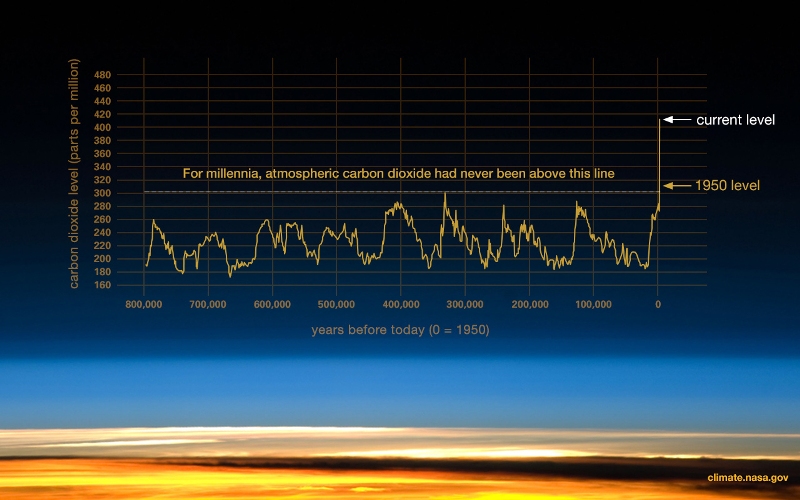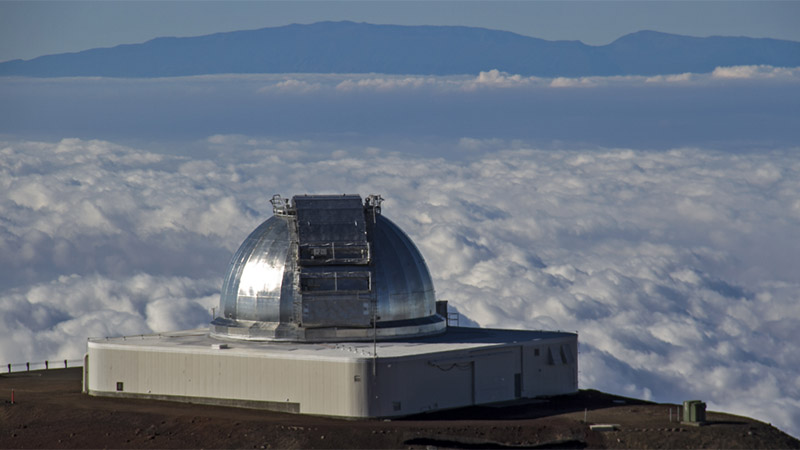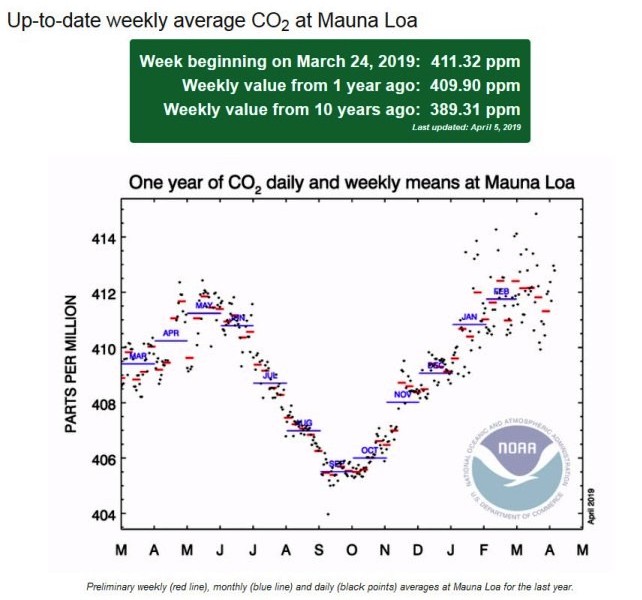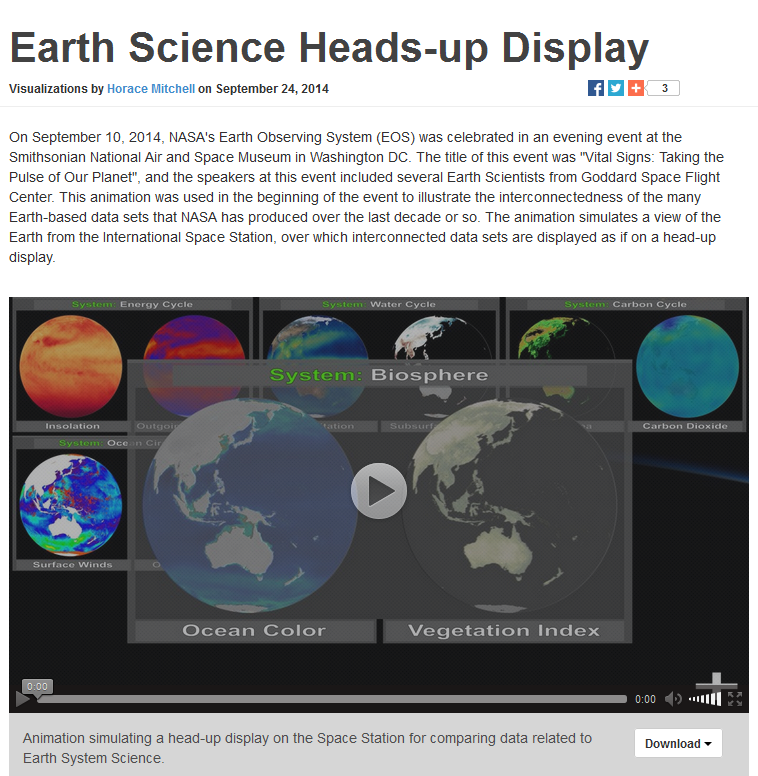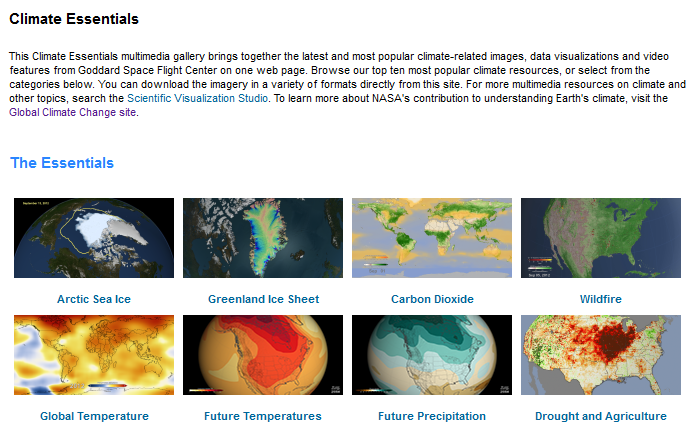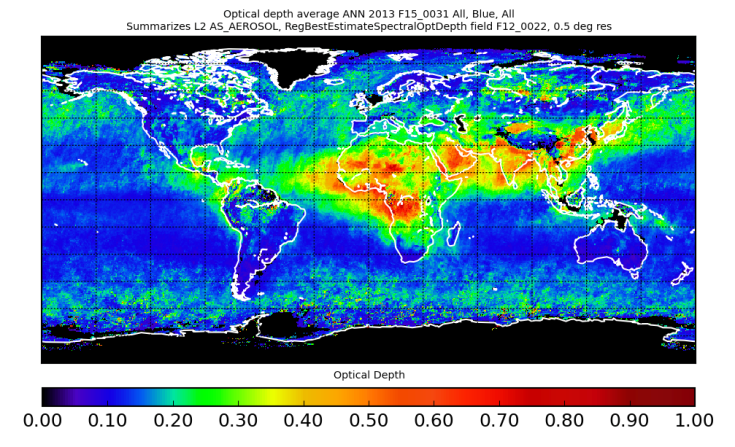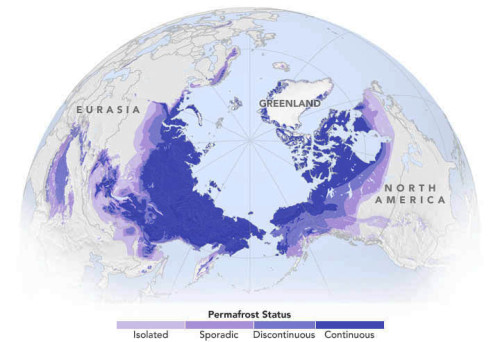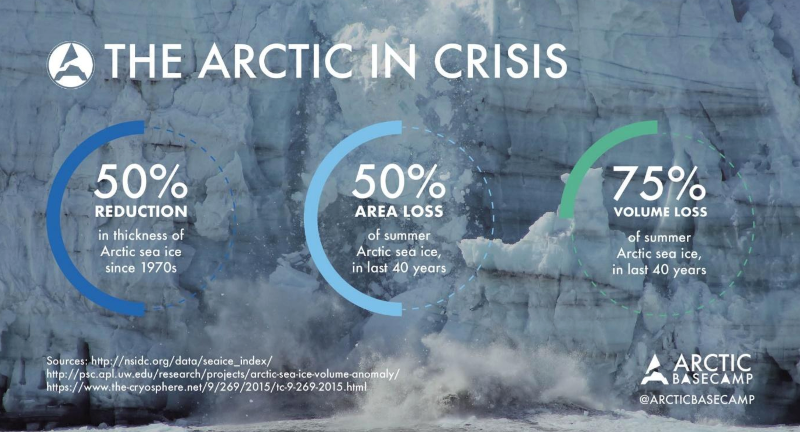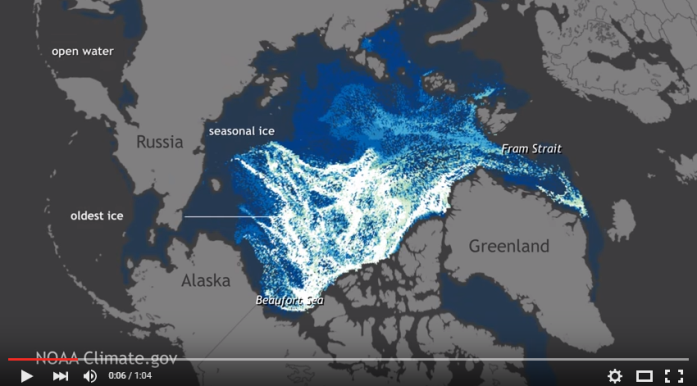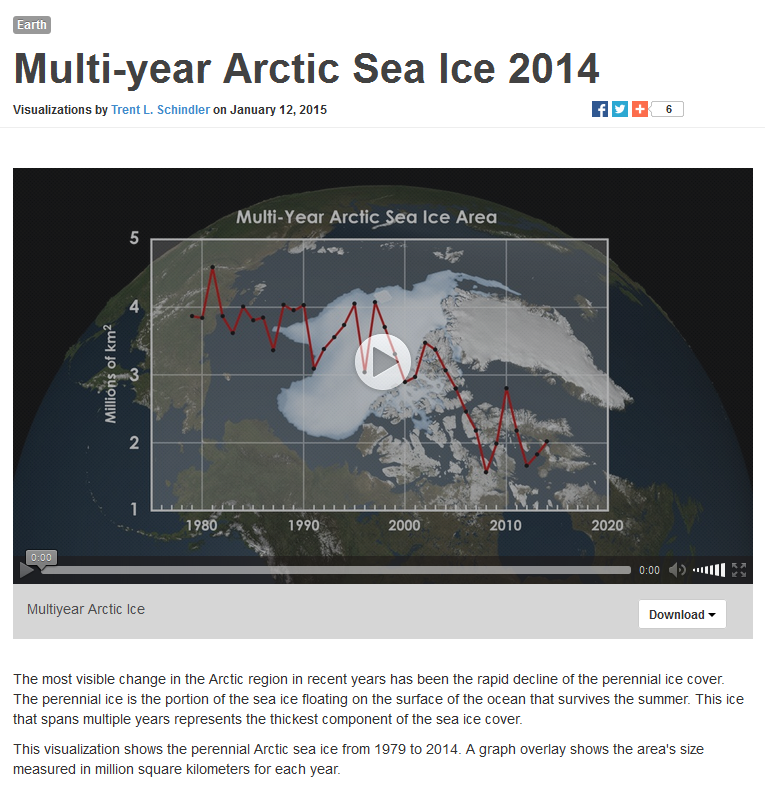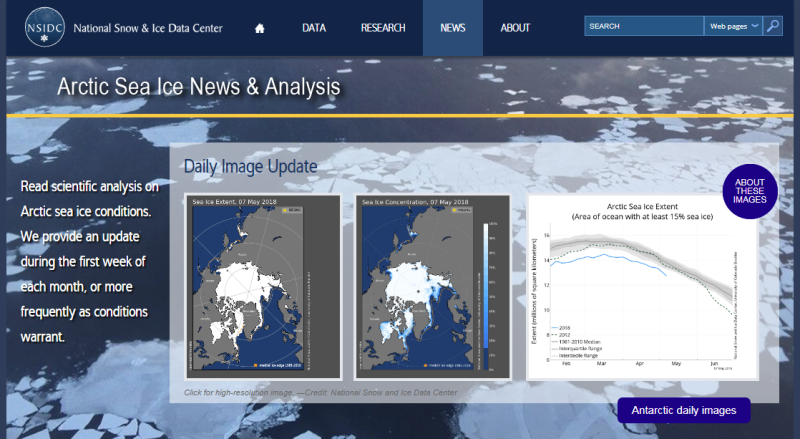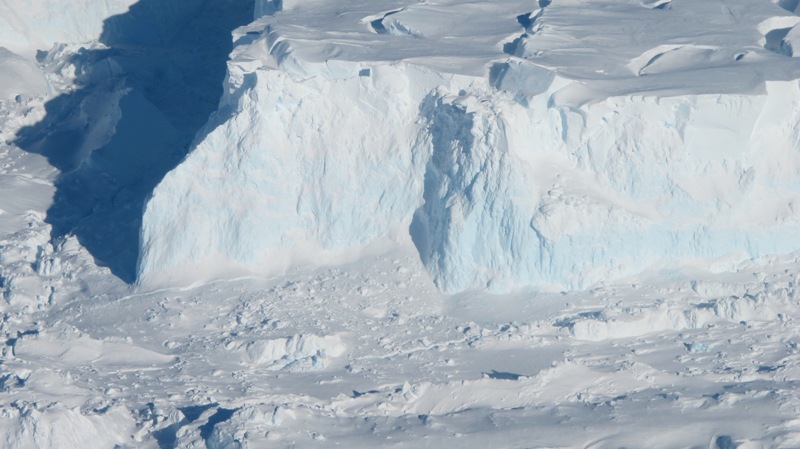Earth Science Vital Signs: Difference between revisions
Siterunner (talk | contribs) mNo edit summary |
Siterunner (talk | contribs) No edit summary |
||
| Line 156: | Line 156: | ||
○ ○ ○ ○ ○ ○ ○ ○ ○ ○ ○ ○ ○ ○ ○ ○ | |||
| Line 182: | Line 182: | ||
○ ○ ○ ○ ○ ○ ○ ○ ○ ○ ○ ○ ○ ○ ○ | |||
| Line 190: | Line 190: | ||
○ ○ ○ ○ ○ ○ ○ ○ ○ ○ ○ ○ ○ ○ ○ | |||
Revision as of 12:47, 25 June 2019
Evidence / Facts
Climate Change: How Do We Know?
• https://climate.nasa.gov/evidence/
The Earth's climate has changed throughout history. Just in the last 650,000 years there have been seven cycles of glacial advance and retreat, with the abrupt end of the last ice age about 7,000 years ago marking the beginning of the modern climate era — and of human civilization. Most of these climate changes are attributed to very small variations in Earth’s orbit that change the amount of solar energy our planet receives.
Scientific evidence for warming of the climate system is unequivocal
- Intergovernmental Panel on Climate Change
The current warming trend is of particular significance because most of it is extremely likely (greater than 95 percent probability) to be the result of human activity since the mid-20th century and proceeding at a rate that is unprecedented over decades to millennia.
Earth-orbiting satellites and other technological advances have enabled scientists to see the big picture, collecting many different types of information about our planet and its climate on a global scale. This body of data, collected over many years, reveals the signals of a changing climate.
The heat-trapping nature of carbon dioxide and other gases was demonstrated in the mid-19th century. Their ability to affect the transfer of infrared energy through the atmosphere is the scientific basis of many instruments flown by NASA. There is no question that increased levels of greenhouse gases must cause the Earth to warm in response.
Ice cores drawn from Greenland, Antarctica, and tropical mountain glaciers show that the Earth’s climate responds to changes in greenhouse gas levels. Ancient evidence can also be found in tree rings, ocean sediments, coral reefs, and layers of sedimentary rocks. This ancient, or paleoclimate, evidence reveals that current warming is occurring roughly ten times faster than the average rate of ice-age-recovery warming.
Critically Demanded
New Definitions of National Security
"Vital Signs of the Planet"
- Critical Missions to Monitor the Health of Earth's Life-Enabling Systems
Pulse of the Planet / Vital Signs... Climate Change
Climate Change: Vital Signs App
Measuring and Monitoring
"We don't know a planet like this." That was the reaction of meteorologist Eric Holthaus to news that atmospheric carbon dioxide levels have reached heights not seen in the entirety of human existence -- not history, existence.
According to data from the Mauna Loa Observatory in Hawaii, the concentration of CO2 in the atmosphere is over 415 parts per million (ppm), far higher than at any point in the last 800,000 years, since before the evolution of homo sapiens.
- Weather +
- April 19: 413.86 ppm
- April 18: 413.43 ppm
- April 17: 413.63 ppm
- https://www.esrl.noaa.gov/gmd/ccgg/trends/index.html
- https://www.esrl.noaa.gov/gmd/ccgg/trends/monthly.html
- https://www.esrl.noaa.gov/gmd/ccgg/trends/full.html
- Oh Mauna, what a Keeling Curve you have
- Keeling's Curve has been called one of the most important scientific works of the 20th century
- ·························································································
- ···········································
- Earth Research: Science to Preserve & Protect Life
- Vital Signs: Measuring to Manage
World Scientists’ Warning to Humanity: A Second Notice
NASA Climate: Vital Signs of the Planet
Vital Signs: Taking the Pulse of the Planet (video)
NASA Earth Observing Satellite Fleet / August 2014
NASA Earth Sciences - Asks Public to Join In
Earth Science and Monitoring from Space
○ ○ ○ ○ ○ ○ ○ ○ ○ ○ ○ ○ ○ ○ ○ ○
- NASA Missions / Earth Right Now
○ ○ ○ ○ ○ ○ ○ ○ ○ ○ ○ ○ ○ ○ ○
Collections of Home Earth Imagery
NASA Scientific Visualization Studio
○ ○ ○ ○ ○ ○ ○ ○ ○ ○ ○ ○ ○ ○ ○
The Atmospheric Science Data Center (ASDC) at NASA Langley Research Center
ASDC is a crucial hub for the NASA Earth science program responsible for processing, archival, and distribution of Earth science data in the areas of radiation budget, clouds, aerosols, and tropospheric chemistry
- ○ ○ ○ ○ ○ ○ ○ ○ ○ ○ ○ ○ ○ ○ ○
○ ○ ○ ○ ○ ○ ○ ○ ○ ○ ○ ○ ○ ○ ○ ○ ○ ○ ○ ○ ○ ○ ○ ○ ○ ○ ○ ○ ○ ○
What Happens in the Arctic Doesn't Stay in the Arctic
Arctic Undergoing Most Unprecedented Transition in Human History
○
Thwaites Glacier, Antarctica
What Happens in Antarctica Doesn't Stay in Antarctica
• Via National Geographic / Watching Thwaites Glacier Up Close and Personal by Elizabeth Rush
The Thwaites Glacier is often considered one of the most important when it comes to changes in sea level....
Along with Thwaites the overwhelming majority of the world’s glaciers have begun to withdraw...
○
- Additional Website Resources - Linked Data - Green Best Practices
- Antarctica
- Anthropocene
- Arctic
- Atmospheric Science
- Biodiversity
- Climate Change
- Climate Policy
- Earth360
- Earth Law
- Earth Observations
- Earth Imaging
- Earth Science
- Earth Science from Space
- Earth System Science
- Eco-nomics
- Ecology Studies
- Environmental Full-cost Accounting
- Environmental Protection
- Environmental Security
- Environmental Security, National Security
- EOS eco Operating System
- ESA
- Externalities
- Global Security
- Health
- ISS
- Land Ethic
- New Space
- Oceans
- Ocean Ecosystem
- Ocean Science
- Ocean Sustainability
- Planet Citizen
- Planet Citizens
- Planet Scientist
- Planet Citizens, Planet Scientists
- Sea-level Rise
- Solar Energy
- Strategic Demands
- Sustainability
- Sustainability Policies
- ThinBlueLayer
- Virtual Planet
- Biogeosciences
- Cryosphere
- Geophysics and Geochemistry
- Mineralogy
- Geology
- Geophysics
- Hydrology
- Natural Resources
- Planetary Science
- United Nations
- United Nations Framework Convention on Climate Change
- US Environmental Protection Agency
